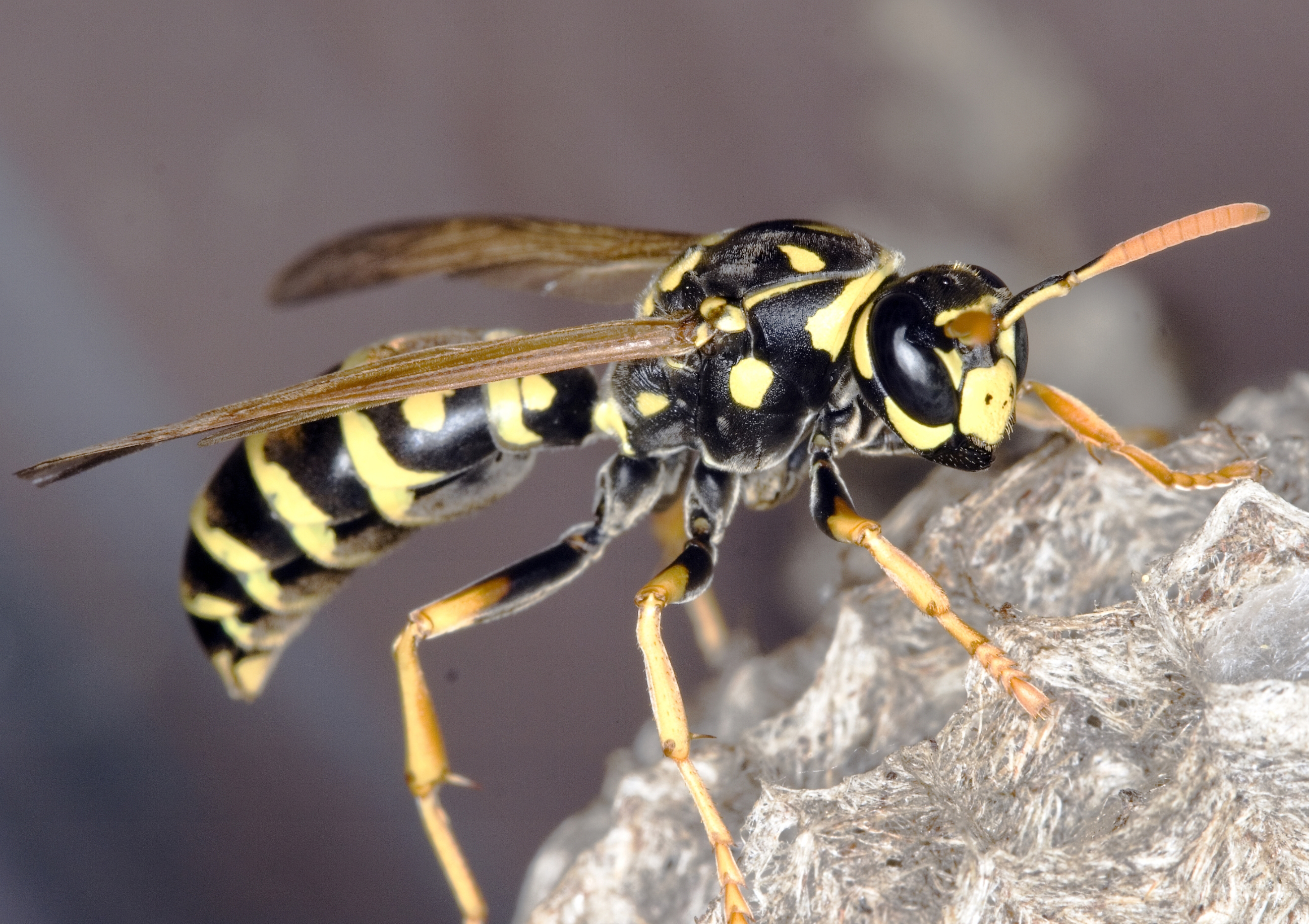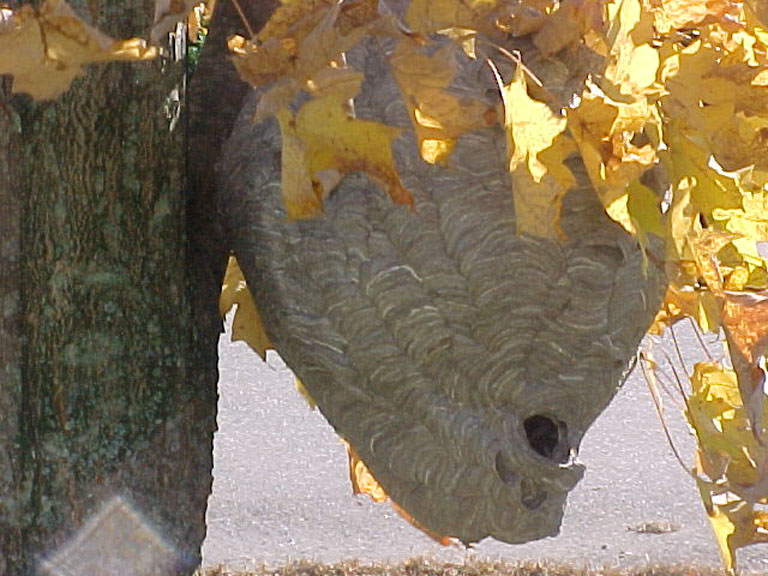Bee, wasp or hornet nest: Which one is it?
Before you go about destroying a nest, you need to determine whether it is a nest of bees, wasps or hornets.

A common question we get on the Michigan State University Extension Lawn and Garden Hotline (888-678-3464) is how to get rid of a bees’ nest. When we ask for a description of the nest or the “bee,” we receive a description for a wasp. Why does this even matter? It is important to know that bees are different insects than hornets or wasps. While all of these species have their own important role and place within the ecosystem, native bees are especially important for pollination services that provide much of our food, food for wildlife, and beauty in the landscape.
Is it a bee, wasp or hornet?

Why are bees, hornets and wasps so often confused? Maybe it is the fact they all buzz and many of us associate that sound with bees. They also all defend their territory by stinging. Many of us fail to appreciate the wide diversity of insect species that exist. Whatever the reason, it is important to properly distinguish what buzzing critter has built a nest so we can help you assess what steps to take in the best interest of both humans and the critter.
Although it may not be easy to snap a photo of the buzzing insect, a picture is ideal. You can share the photo with the hotline staff or upload it to the Ask an Expert resource for proper identification. Check out MSU Plant & Pest Diagnostics Insects and Arthropods for photos to help you determine the difference between bees, hornets and wasps.
Where is the nest and what does it look like?
Do you know there are over 450 native bee pollinators in Michigan and over 2,000 in the United States? They all provide very important pollination services for our food sources and they need our help in providing habitat, food and water for them. Some bee species are solitary; they don’t swarm and rarely sting, as they do not need to protect a queen. They will nest in cavities of wood, hollow stems or the ground, so it is important to provide these diverse habitats. Think about ways to include these undisturbed areas within your gardens and landscapes.
Ground nesting bees
You may notice some individual holes in the ground. They may be located in a more undisturbed area, in your vegetable garden or even within your lawn. These will most likely be from solitary native bee species, so they do not have a queen and rarely want to sting. Again, if they are bees, they will have a hairy body and want to fly away rather than stay and defend their territory like a wasp or hornet. Below is a photo of what the ground nesting bee's exit holes may look like.

Ground nesting wasps
Ground nesters could also be the eastern yellow jacket, as seen below. Different from ground nesting bees, they have formed a colony beneath the surface and will voraciously protect it. This species is often attracted to our food during family picnics. If you have this wasp nesting in an area that is frequented by you or others, you will want to get rid of this nest for human safety. Sometimes a wild animal, such as a skunk, will do the job for you. As they are after the developing and tasty wasp pupae, they dig up the nest and destroy the paper combs.


If you look really close in the photo above, you can see a yellow jacket wasp hovering over the opening. Also, note how much larger this opening is compared to the photo of the ground bee's nest.
Nests in trees
Wasps and hornets often create their nests in areas that interfere with our daily human travel, such as building a paper nest under a house eave. If they feel threatened, hornets and wasps will defend their territory by repeatedly stinging. Interestingly, hornets and wasps are also predatory insects, preying upon other insects, bees included, and eating them.
Below is a photo of a hornet nest in a tree. If this type of nest is in a location that interferes with humans being able to walk safely around, then you must consider ways to safely get rid of the nest.

How to get rid of the nest
Once you’ve correctly determined that it’s a wasps’ or hornets’ nest, decide whether the nest will create any safety concerns for humans. If it will, then it’s best to properly deal with the nest as explained in MSU Plant & Pest Diagnostics Insects and Arthropods for each species. Also, check out this great article below from MSU entomologist Howard Russell. Always remember to read and follow all pesticide labels.



 Print
Print Email
Email